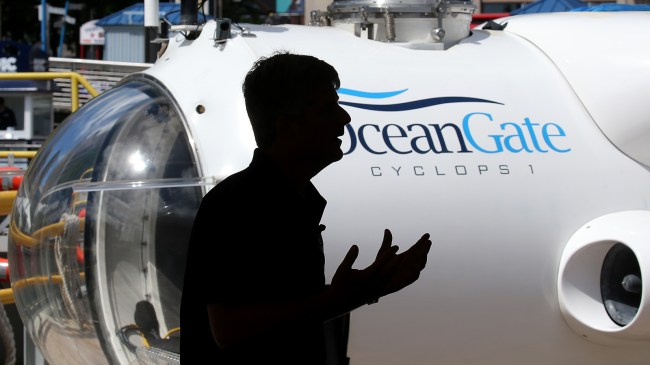Getty Image
It’s been close to a year since the world was captivated by the wild saga of the OceanGate submersible that suffered a catastrophic failure while diving to the wreck of the Titanic, and a new study suggests the carbon fiber that was used to construct the craft all but ensured it would meet that tragic fate.
Last summer, OceanGate—the company that designed and operated the Titan submersible used to transport wealthy deep-sea tourists to the watery grave of the Titanic—attracted international attention when it announced it had lost contact with the vessel that had five people (including its founder) aboard during its descent.
The news sparked a massive search-and-rescue operation that set out to locate the Titan before its onboard oxygen supply ran out. Sadly, it was a futile endeavor, as the Coast Guard eventually discovered debris that confirmed it imploded in a tragic incident that claimed the lives of all of its passengers.
OceanGate had previously dismissed concerns about potential engineering flaws that led some people to argue the Titan (which was operated by a third-party video game controller) was a death trap, and the company unsurprisingly announced it was suspending operations after those fears were realized.
Now, we may have some insight into exactly what went wrong courtesy of a study that has seemingly identified its most glaring issue.
According to The Independent, a team of researchers at the University of Houston and the University of Minnesota recently published a paper that used computer simulations to examine how small defects in various materials could potentially contribute to the kind of catastrophic buckling the Titan fell victim to.
The study didn’t explicitly focus on the Titan, but University of Houston professor Roberto Ballarini referenced the disaster while discussing the findings, saying:
“The material used for the Titan’s hull was a carbon fiber composite. It is well known that under compression loading the fibers in such composites are susceptible to micro-buckling.
If the Titan’s hull experienced such damage under the extreme compressive pressures during its dives, then its stiffness and strength would have significantly decreased. Together with the inevitable geometric imperfections introduced during its manufacturing, [that] may have contributed to its buckling-induced implosion.”
In conclusion: if you’re going to build a deep-sea submersible, do not construct the hull out of carbon fiber.

